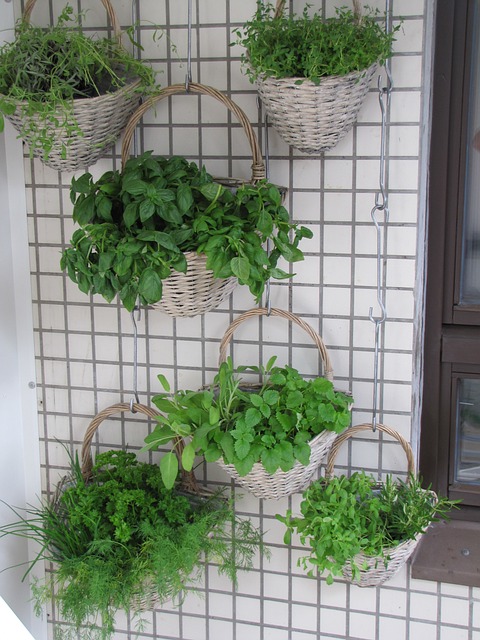
Autumn has arrived, and many gardeners are harvesting and preparing for the winter. This is not only canning vegetables but also drying herbs. You will like our article if you love aromatic herbs for cooking or delicious tea. We decided to learn how to grow your herb garden in the kitchen so the plants are fresh for your table. Let’s discuss what tools and materials you need. This is not just a few small trough planters; it will be a full-fledged compact mini garden that will give you fresh herbs almost all year round.
What do you need to start creating a herb garden?
First of all, choose the ideal location. This could be a tabletop corner with small shelves to place pots in tiers. You can also grow herbs on a windowsill if you have enough space. If the winter in your region is mild, then you can make such a garden on the balcony. Of course, if this area is glazed and there is an average temperature without drafts. Having chosen a place, proceed to prepare the material and tools.
From the tools, you need to take scissors and a garden trowel. If necessary, you can install unique lamps for growing plants. Now let’s move on to the materials. Take pots to grow herbs or seedlings. Most often, these are long rectangular types, but you can choose any shapes you like which will be convenient for you to place in the chosen location. Now you need herb seeds or ready-made seedlings. Take care of the soil in which your herbs will grow. You also need to remember about trays for pots where excess liquid will drain after watering.
Which herbs to choose for growing indoors?
Many gardeners think all herbs will grow well indoors, but this is untrue. For example, rosemary is unsuitable for this growing type because the plant is quite large and awkward. It is essential to understand that the stove often runs in the kitchen, and there is a temperature difference with increasing humidity. For such conditions, choosing the following plants and herbs: green onions, dill, basil or oregano is better. You can also choose thyme, mint, coriander or sage. These herbs do not require much care and are often chosen for school science projects.
Tips for Growing Herbs Indoors:
- Give your herbs the proper moisture level. You can do this with a simple spray bottle or purchase a special humidifier.
- Indoor herbs also need sunlight. Allow them to enjoy the sun at least 6 hours a day. To do this, place them near a window that faces south. You can also arrange constant lighting that will work from 14 to 16 hours.
- To keep plant leaves healthy, you need to add water-soluble fertilizer regularly. The composition must have high nitrogen content.
- You will need to cut off new shoots every week to encourage the herbs to ripen more fully.
- If you are growing herbs in a window, alternate them so each type receives the required sunlight.
- Water your herbs only when you feel the soil in the planter is dry.
Herb care and harvesting
The time for planting home herbs can be any time; outdoor growing has no seasonal restrictions. You can plant some herbs together based on their watering needs. For example, lavender and thyme, green onions and basil. However, some plants are best grown separately because they grow rapidly and can cover other plants in your kitchen garden or yard. These are lemon balm, catmint and peppermint.
Many herbs can be cut back when they are several inches tall. Frequently pruning your herbs will result in a larger, longer-lasting harvest. You can trim new growth once a week, even if you don’t need it in your recipes. If the spruce stems are long, cutting off new flower buds when they appear is better. Many gardeners move herbs to the deck or yard when temperatures rise. It is best to do this mid-spring; the plants would receive sunlight and fresh air. Some herbs can be enjoyed year-round, and you can alternate between them in your home and yard.
If the air in the room where you grow herbs is particularly dry (this often happens in regions with cold winters), then you will need to place the pots with herbs on trays of stones. It’s simple: fill all trays with clean water, make sure the level is below the drainage holes on the planters, and place the pots on top.
Conclusion
There is nothing complicated about growing herbs indoors; you need patience and a little time for care. It’s not as complicated as a home garden with flowers and plants. All your herbs are in one place, so watering and spraying them will be easier. You get many benefits: It is a beautiful green area with fresh plants and provides a pleasant aroma and fresh seasonings for your favourite dishes. Brew your favourite tea and add a few fresh mint leaves from your kitchen garden.




 POSTED BY
POSTED BY 

